- Home
- H A CULLEY
The Wolf and the Raven
The Wolf and the Raven Read online
THE WOLF AND THE RAVEN
By
H A Culley
Book seven about the Anglo-Saxon Kings of Northumbria
Published by
Orchard House Publishing
First Kindle Edition 2018
Text copyright © 2018 H A Culley
The author asserts the moral right under the Copyright, Designs and Patents Act 1988 to be identified as the author of this work.
This novel is a work of fiction. The names, characters and events portrayed in it, which sticking as closely to the recorded history of the time and featuring a number of historical figures, are largely the product of the author’s imagination.
It is sold subject to the condition that it shall not by way of trade or otherwise be lent, resold, hired out or otherwise circulated without the author or the publisher’s prior consent, electronically or in any form of binding or cover other than the form in which it is published and without this condition being imposed on any subsequent purchaser or owner.
Replication or distribution of any part is strictly prohibited without the written permission of the copyright holder.
All Rights Reserved
Cover Image: (c) 123rf.com¦ Michael Rosskothen
TABLE OF CONTENTS
List of Principal Characters
Place Names
Glossary
Prologue
PART ONE - RAGNAR LODBROK
Chapter One – The Raid
Chapter Two – Northumbria
Chapter Three – The Return Home
Chapter Four – Toppenafdanmark
Chapter Five – The Rise of Ragnar
Chapter Six – The Raid on Neustria
Chapter Seven – Ragnar’s Revenge
PART TWO – EDMUND OF BEBBANBURG
Chapter Eight – The Humbling of Eanred
Chapter Nine – The Cumbrian Campaign
Chapter Ten – Death at Whitby
PART THREE – RAGNAR THE KING
Chapter Eleven – The Shield Maiden
Chapter Twelve – Aslaug
Chapter Thirteen – The Sons of Ragnar
Chapter Fourteen – Invasion of Frankia
Chapter Fifteen – The Capture of Paris
Chapter Sixteen – From Disaster to Victory
PART FOUR – THE RAVEN VERSUS THE WOLF
Chapter Seventeen – The Return Home
Chapter Eighteen – The Land of Ice and Fire
Chapter Nineteen – The Struggle for Supremacy
Chapter Twenty – The Fall of Eoforwīc
Chapter Twenty One – The Fate of Kings
Chapter Twenty Two – The Final Battle
Epilogue
AUTHOR’S NOTE
About the Author
List of Principal Characters
VIKINGS
Ragnar’s Family
Ragnar Sigvardson – Nicknamed Lodbrok (shaggy breeches). Son of King Sigvard of Agder (Southern Norway)
Thora Borganhjort – Daughter of Jarl Gutfred and Ragnar’s first wife
Agnar Ragnarson – Their elder son
Eirik Ragnarson – Their younger son
Lagertha the Shieldmaiden – Ragnar’s second wife
Fridlief Ragnarson – their son
Ragnhild Ragnarsdóttir – their daughter
Aslaug – A Norse princess and Ragnar’s third wife
Ivar the Boneless – Their eldest son
Bjorn Ironside – Their second son
Sigurd Snake-in-the-Eye – Their third son
Halfdan Ragnarson – Their youngest son, also called Hvitserk (white shirt)
Åløf – Aslaug’s daughter
Other Vikings
Agði – Olaf’s eldest son and Ragnar’s closest companion in his declining years. The name meant man from Agder
Eystein Beli – King of Uppsala in Sweden and father of Aslaug
Finnulf – Jarl of Gotland in Sweden
Froh - King of the minor Swedish kingdom of Alfheim
Gedda – Lagertha’s brother
Gutfred – Jarl of Lindholm and the lands bordering the Limfjord in northern Jutland
Grimulf – A Danish hersir; later Jarl of Lindholm
Guthrum – His son and successor, later King of East Anglia
Harald Klak – King of Denmark
Hákon- Eystein Beli’s nephew
Horik – King of Denmark after Harald Klak; also the name of one of his sons
Ingólfr Arnarson – The man credited with settling Iceland
Kjarten – Froh’s brother
Olaf – Ragnar’s closest companion
Osten – Eystein’s brother
Sitric – A helmsman
Thorkel – A hersir
Torstein – Ragnar’s godi
Yingvi - One of Ragnar’s hirdmen
NORTHUMBRIANS
Kings
Eardwulf – 796 to 806 and again from 808 to 830
Ælfwald – Usurper. 806 to 808
Eanred – Son of Eardwulf. 830 to 854
Æthelred II – Son of Earnred. 854 to 858 then deposed. Restored 858 to 862. Murdered
Rædwulf – Usurper. 858. Died in battle
Osberht – 862. Deposed but still recognised as king by many
Ælle – 862 – 867. Ruled in competition to his brother Osberht
Ealdorman of Bebbanburg’s Household
Eafa – 796 to 840. Son of Octa (d. 793) and Cynwise (d. 800)
Breguswid – His wife from 820 to 840
Ilfrid – Their eldest son. b. 821. Ealdorman 840 to 841
Edmund – Their younger son. b. 825. Ealdorman 841 to 880
Burwena – Edmund’s wife and Rædwulf’s sister
Osgern – Their daughter. b. 849. Married King Ælle in 862
Ricsige – Their son. b. 852, later the last Anglo-Saxon King of Northumbria
Garr – Captain of Eafa’s warband
Cynefrith – Captain of Edmund’s warband after Garr
Erik – Eafa’s body servant
Laughlin – Ilfrid’s body servant, later Edmund’s
Drefan – A boy serving as a scout with Edmund’s warband
Hrothwulf – Drefan’s elder brother, also a scout
Other Northumbrians
Bishops of Lindisfarne
Heathwred – 821 to 830
Ecgred – 830 to 845
Eanbert –845 to 854
Eardulf –854 to 899
Archbishops of Eoforwīc
Wulfsige – 808 to 837
Wigmund – 837 to 854
Wulfhere – 854 to 900
Other Ealdormen
Anson – Islandshire during Edmund’s banishment
Iuwine - Luncæstershire
Kendric - Dùn Barra and Dùn Èideann
Rædwulf – Cumbria from 836 to 858, when he seized the throne
Siferth – Jarrow and Tynedale
Franks
Bastiaan – Viscount of the coastal region of the County of Arras
Louis – His father, Count of Arras
Joscelin – Louis’ daughter
Charles the Bald – King of West Frankia, later Holy Roman Emperor
Place Names
(In alphabetical order)
Many place names used in this novel may be unfamiliar to the reader. Where the Old English name is known I have used it and these are listed below, together with places in Scandinavia and on the Continent that readers may not be familiar with:
Alfheim – The coastal region of south western Sweden on the Kattegat, bounded to the north by Vestfold and to the south by Halland. It corresponds roughly to the modern Swedish province of Bohuslän
Agder – Modern Sørlandet. The southernmost region of Norway, bou
nded by the kingdom of Vestfold (q.v) and the Skagerrak (q.v.) to the east and the North Sea (German Ocean) to the west
Arendal – Capital of Agder (q.v.)
Bebbanburg – Bamburgh, Northumberland, North East England
Bernicia – The modern counties of Northumberland, Durham, Tyne & Wear and Cleveland in the North East of England and Lothian, now part of Scotland
Berwic – Berwick upon Tweed, Northumberland
Bohus – Capital of Alfheim in Sweden
Caer Luel – Carlisle, Cumbria
Caracotinum – Harfleur in France
Châlons sur Marne – Châlons-en-Champagne, France
Conganis – Chester-le-Street, County Durham
Dalriada – Much of Argyll and the Inner Hebrides
Deira – Most of North Yorkshire and northern Humberside
Duibhlinn – Dublin, Ireland
Dùn Breatainn - Literally Fortress of the Britons. Dumbarton, Scotland
Dùn Èideann - Edinburgh
Eoforwīc - York
Frankia – The territories inhabited and ruled by the Franks, a confederation of West Germanic tribes, approximating to present day France and a large part of Germany
Frisia - A coastal region in what today part of the Netherlands
German Ocean – North Sea
Gotland – Large island off the east coast of Sweden
Kattegat – The sea area bounded by Jutland in the west, the Skagerrak (q.v) in the north and Sweden in the east. The Baltic Sea drains into the Kattegat through the Danish Straits
Loidis – Leeds, Yorkshire
Luncæster – Lancaster, Lancashire
Lundenwic – London
Mercia – Roughly the present day Midlands of England
Neustria – Part of Frankia, lying between Aquitaine and Burgundy to the south and the English Channel. Roughly north-eastern France, excluding Brittany
Northumbria – The north of England and south-eastern Scotland
Orkneyjar – The Norse name for the Orkney Isles
Pictland – The confederation of kingdoms including Shetland, the Orkneys, the Outer Hebrides, Skye and the Scottish Highlands north of a line running roughly from Skye to the Firth of Forth
River Derventio – River Derwent in Northumberland; Derventio means valley of the oaks in the Brythonic tongue
River Twaid – The river Tweed, which flows west from Berwick through northern Northumberland and the Scottish Borders
Skagen – Now Denmark's northernmost town, it is situated on the east coast of the Skagen Odde peninsula in the far north of Jutland
Skagerrak – The strait running between the southeast coast of Norway, the southwest coast of Sweden, and the Jutland peninsula of Denmark, connecting the North Sea and the Kattegat (q.v.)
Snæland - Iceland
Strathclyde – South west Scotland
Uppsala - The main pagan centre of Sweden and the capital of the kingdom of the same name, lying on the east coast between Geatland in the south and Kvenland in the north.
Vestfold – The coastal kingdom on the Kattegat lying between Agder and Alfheim
Glossary
ANGLO-SAXON
Ætheling – Literally ‘throne-worthy. An Anglo-Saxon prince
Birlinn – A wooden ship similar to the later Scottish galleys. Usually with a single mast and square rigged sail, they could also be propelled by oars with one man to each oar
Byrnie - A long (usually sleeveless) tunic of chain mail
Ceorl - Freemen who worked the land or else provided a service or trade such as metal working, carpentry, weaving etc. They ranked between thegns and slaves and provided the fyrd in time of war
Cyning – Old English for king and the term by which they were normally addressed
Gesith – The companions of a king, prince or noble, usually acting as his bodyguard
Geats - A Germanic tribe inhabiting what is now called Götaland (Land of the Geats) in the southern tip of Sweden
Hereræswa – Military commander or general. The man who commanded the army of a nation under the king
Knarr - A merchant ship where the hull was wider, deeper and shorter than that of a birlinn
Seax – A bladed weapon somewhere in size between a dagger and a sword. Mainly used for close-quarter fighting where a sword would be too long and unwieldy
Thegn – The lowest rank of noble. A man who held a certain amount of land direct from the king or from a senior nobleman, ranking between an ordinary freeman and an ealdorman
Settlement – Any grouping of residential buildings, usually around the king’s or lord’s hall. In 9th century England the term town or village had not yet come into use
Witan – The council of an Anglo-Saxon kingdom. Its composition varied, depending on the matters to be debated. Usually it consisted of the ealdormen, the bishops and the abbots
Villein - A peasant who ranked above a bondsman or slave but who was legally tied to his vill
Vill - A thegn’s holding or similar area of land in Anglo-Saxon England which might otherwise be described as a parish or manor
VIKING
Bóndi - Farmers and craftsmen who were free men and enjoyed rights such as the ownership of weapons and membership of the Thing. They could be tenants or landowners
Byrnie - a long (usually sleeveless) tunic of chain mail
Godi – A pagan priest
Havnesjef – Harbour master (modern) or port reeve (medieval)
Hirdman – A member of a king’s or a jarl’s personal bodyguard, collectively known as the hird
Hersir – A bóndi who was chosen to a leader of warriors under a king or a jarl. Typically they were wealthy landowners who could recruit enough other bóndi to serve under their command
Jarl – A Norse or Danish chieftain; in Sweden they were regional governors appointed by the king
Konungr - King in old Norse; similar words were used in the rest of Scandinavia
Lagman (pl. lagmän) – Literally a lawspeaker. In Scandinavia where there were few written records, if any, a lagman was a respected individual who could recite the law from memory
Nailed God – Pagan name for Christ, also called the White Christ
Norns – The three goddesses who control the fate of all beings, including humans and gods
Thing – The governing assembly made up of the free people of the community presided over by a lagman (q.v.). The meeting-place of the Thing was called the Thingstead
Thrall – A slave. A man, woman or child in bondage to his or her owner. Thralls had no rights and could be beaten or killed with impunity
Völva – A female shaman (meaning spirit medium, magician and healer) and a prophetess
NORSE GODS AND MYTHOLOGY
Asgard - Home to the Æsir tribe of gods, ruled over by Odin and Frigg
Frey – Son of Njǫrd. God of fertility
Freyja – Daughter of Njǫrd. Goddess of love, sex and sorcery
Frigg – Odin’s wife
Hel – Goddess of the underworld (Helheim q.v.)
Helheim - One of the nine worlds where all who die from disease, old age or other causes without having accomplished something worthy go in the afterlife. Unlike the Christian Hell, it is place of icy coldness
Loki – The mischief maker, father of Hel
Midgard – The place where men live; one of the nine worlds
The Nine Worlds – Asgard (q.v.), Midgard (q.v.), Helheim(q.v.), Niflheim, Muspelheim, Jotunheim, Vanaheim, Ljosalfheim and Svartalfheim. The nine worlds are inhabited by different types of being (gods, mankind, giants, the dead etc)
Njǫrd – God of the sea and of wind, fire and prosperity
Norns – The three female beings who control the fates of men
Odin – The All-Father. Chief of the gods. Associated with war, wisdom and poetry
Ragnarök – A great battle sometime in the future when the gods Odin, Thor, Týr, Freyr and Loki will die. This will lead to various natural disasters an
d the subsequent submersion of the world by water. Afterwards, the world will be reborn
Rán – Goddess of the sea
Thor – Odin’s son, god of thunder, armed with Mjolnir, a magic hammer. An emblem depicting the Mjolnir was worn around the neck by most Vikings, which they touched for luck
Tyr – Lord of battle
Valhalla – An enormous hall located in Asgard (q.v.), ruled over by the god Odin. Chosen by Odin, half of those who die in combat travel to Valhalla upon death, led by valkyries (q.v). Those not chosen go to the goddess Freyja's meadow, Fólkvangr
Valkyries – The choosers of the slain. They decide who dies in battle and who lives and then choose whether the dead go to Valhalla or Fólkvangr
LONGSHIPS
In order of size:
Knarr – Also called karve or karvi. The smallest type of longship. It had 6 to 16 benches and, like their English equivalents, they were mainly used for fishing and trading, but they were occasionally commissioned for military use. They were broader in the beam and had a deeper draught than other longships.
Snekkja – (Plural snekkjur). Typically the smallest longship used in warfare and was classified as a ship with at least 20 rowing benches. A typical snekkja might have a length of 17 m, a width of 2.5 m and a draught of only 0.5 m. Norse snekkjas, designed for deep fjords and Atlantic weather, typically had more draught than the Danish type, which were intended for shallow water
Drekar - (Dragon ship). Larger warships consisting of more than 30 rowing benches. Typically they could carry a crew of some 70–80 men and measured around 30 m in length. These ships were more properly called skeids; the term drekar referred to the carvings of menacing beasts, such as dragons and snakes, mounted on the prow of the ship during a sea battle or when raiding. Strictly speaking Drekar is the plural form, the singular being dreki or dreka, but these words don’t appear to be accepted usage in English

 The Wolf and the Raven
The Wolf and the Raven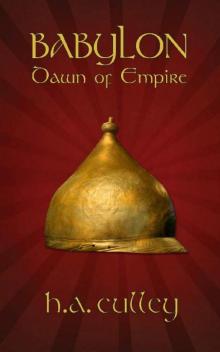 Dawn of Empire
Dawn of Empire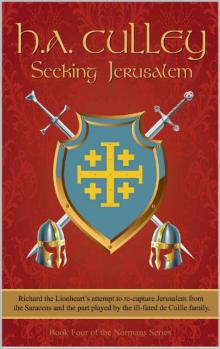 Seeking Jerusalem
Seeking Jerusalem The Strategos
The Strategos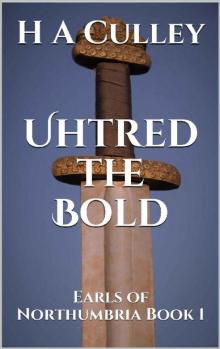 Uhtred the Bold
Uhtred the Bold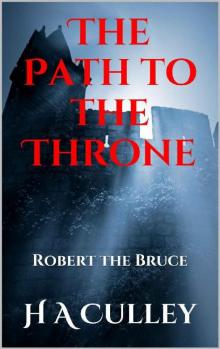 The Path to the Throne
The Path to the Throne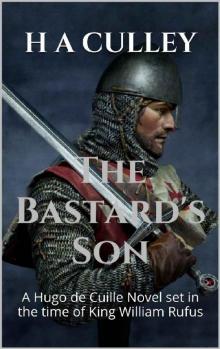 The Bastard's Son
The Bastard's Son Alexander
Alexander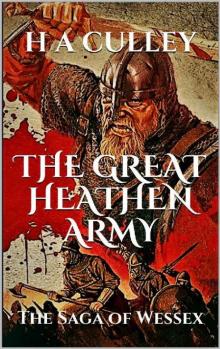 The Great Heathen Army
The Great Heathen Army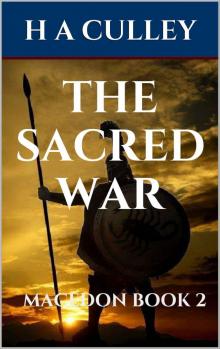 The Sacred War
The Sacred War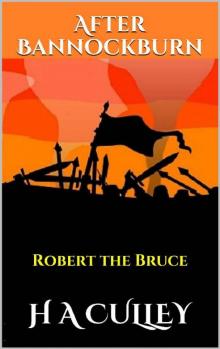 After Bannockburn
After Bannockburn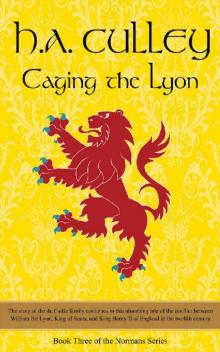 Caging the Lyon
Caging the Lyon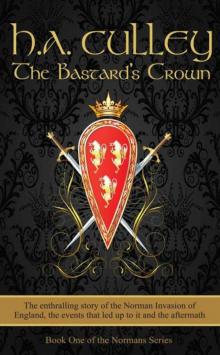 The Bastard's Crown
The Bastard's Crown WHITEBLADE
WHITEBLADE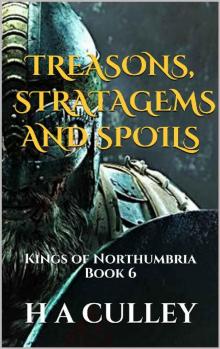 TREASONS, STRATAGEMS AND SPOILS: Kings of Northumbria Book 6
TREASONS, STRATAGEMS AND SPOILS: Kings of Northumbria Book 6 THE POWER AND THE GLORY: Kings of Northumbria Book 4
THE POWER AND THE GLORY: Kings of Northumbria Book 4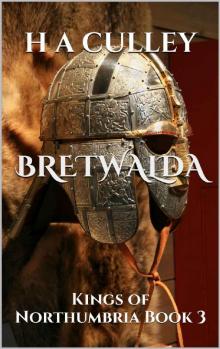 BRETWALDA: Kings of Northumbria Book 3
BRETWALDA: Kings of Northumbria Book 3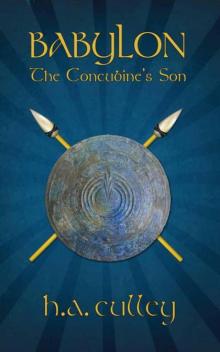 The Concubine's Son
The Concubine's Son The Fall of the House of Æthelfrith: Kings of Northumbria Book 5
The Fall of the House of Æthelfrith: Kings of Northumbria Book 5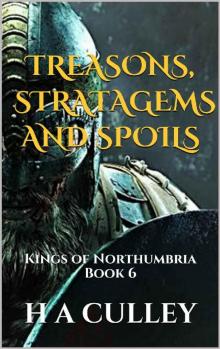 TREASONS, STRATAGEMS AND SPOILS
TREASONS, STRATAGEMS AND SPOILS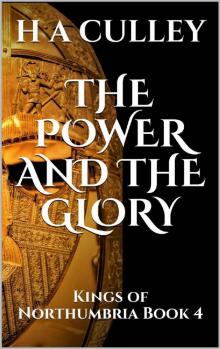 THE POWER AND THE GLORY
THE POWER AND THE GLORY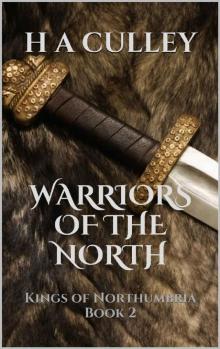 WARRIORS OF THE NORTH
WARRIORS OF THE NORTH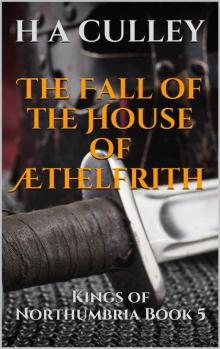 The Fall of the House of Æthelfrith
The Fall of the House of Æthelfrith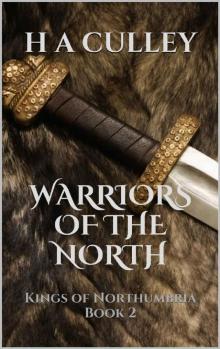 WARRIORS OF THE NORTH: Kings of Northumbria Book 2
WARRIORS OF THE NORTH: Kings of Northumbria Book 2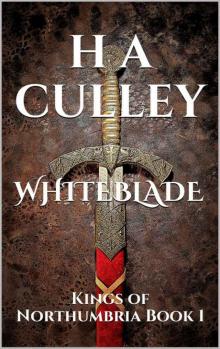 WHITEBLADE: Kings of Northumbria Book 1
WHITEBLADE: Kings of Northumbria Book 1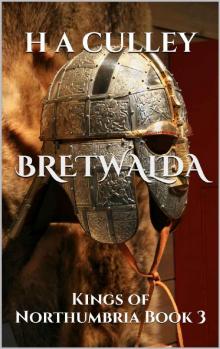 BRETWALDA
BRETWALDA